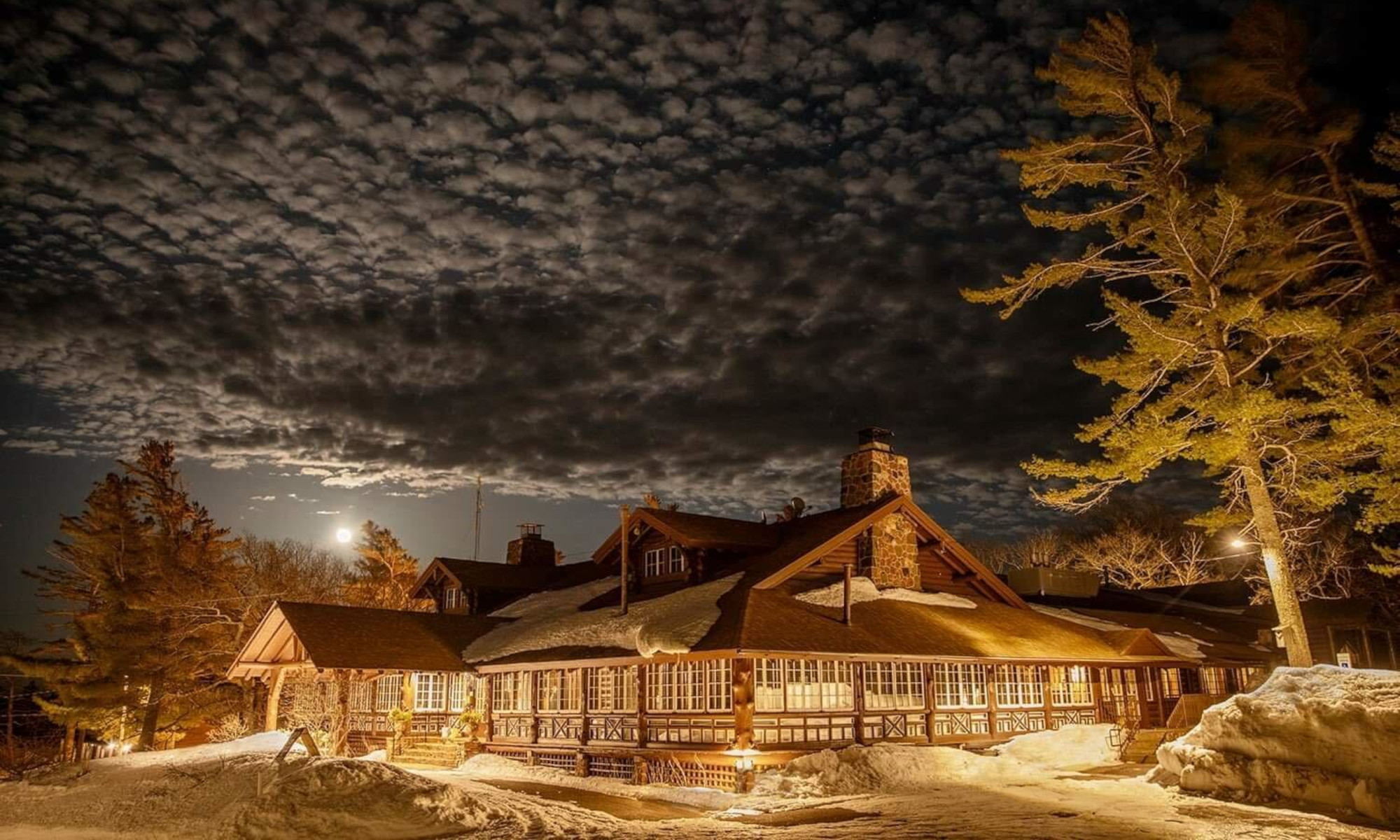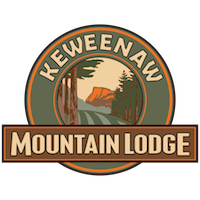An important aspect of our winter activities at the Keweenaw Mountain Lodge (KML) is that we need to regularly check trail conditions, reset the trails after snowstorms, and sometimes repair trail sections which get damaged from use or changing weather conditions.
On Friday (March 18, 2022), I ventured out on the section of the Snowshoe Trail, which I knew was going to be used for our monthly “Moonlit Snowshoe Hikes” scheduled for the following night. With the recent warming trend we had seen in the region, I was concerned about 1) small avalanches possibly burying one particular section of the trail which passes below a short but picturesque “cliff” and 2) the overall stability of the snow due to the daily cycle of melt and freeze we had seen during the previous week. Inspecting the trail a day in advance would be much better than dealing with unexpected challenges while guiding a group of guests (potentially up to 20), after dark and in the cold.
Sometimes, though, doing regular tasks at KML provides some unique and unexpected experiences. In this case, as I rounded the snow-buried green for Hole #2 on our golf course, I noticed some animal tracks that caught my attention. Seeing animal tracks in the snow is not an uncommon occurrence and it provides me with a general understanding of the animals that actively use the KML grounds. I commonly see the tracks of squirrels, turkeys, snowshoe hares, mice, coyotes, and foxes while I am snowshoeing. On one occasion, I also encountered a set of bobcat tracks that crossed the trail.
The tracks I saw on Friday, though, were especially interesting to me. The prints were egg-shaped, with impressions from claws present, meaning that they were the tracks of a canine. They were large prints with, what seemed like, a large stride. My initial thought was that the animal making the tracks might be a wolf. However, animal tracks in snow can often appear to be larger than what they actually are, especially if the snow has been melting and refreezing.
For me to make the claim that a wolf (Canis lupus) had passed over the golf course, I needed to eliminate the other possibilities – coyote (Canis latrans) and domestic dog (Canis familiaris) – first. So, I tried to find clear prints that were not deep in the snow, not distorted from any thawing, and easily photographable. It was the final requirement which proved, at first, to be unobtainable. I found tracks on the surface, where the hardened snow was able to support the animal, and left impressions about ⅛-inch to ¼-inch deep. However, given the mid-day light conditions, I could not get any of the pictures of the prints to look like anything other than snow with some texture. Hoping to find some better prints, I followed the animal’s path back to where it had crossed Highway 41 (adjacent to the west border of the KML property). I did not find any suitable prints
At this point, I decided that I likely wouldn’t find any prints that would suit my needs and that I still needed to complete my primary task, inspecting the snowshoe trail. So, I continued on with my trail inspection, accepting that I wouldn’t claim to have found wolf tracks on the property.
When I completed my trail inspection, the tracks remained on my mind. The particular thoughts that remained for me were 1) I might be able to find a suitable print to measure if the animal happened to walk through areas with more shallow snow, 2) if I followed the track, I might come upon other evidence (e.g., scat or a kill site) which could give me more information on the animal’s identity, and 3) the track appeared quite fresh to me and I was convinced that the animal had passed through sometime during the previous 12-14 hours…which meant that it could be bedded down somewhere among the trees and I might even be able to get a picture of the animal itself – if I was stealthy enough. So, I backtracked to Hole #2 on the golf course and picked up the animal’s trail on the opposite side of the green where I had initially seen it.
Because I thought it would be interesting to see a map of where the animal traveled on the property, I turned on a GPS app on my iPhone to record the path I was following. Then I began to slowly follow the tracks in the snow, searching for good prints or other sign the animal may have left, while scanning the land in front of me for any movement or unexpected spots in the snow which might be an animal lying down.
Within 30 feet, I found a print that was excellent for both measuring and photographing. It was at a location near the base of an older white pine tree where the snow had become shallow enough to not cause the print to 1) be obscured by loose snow falling into the print or so hardened that a print was not well formed. Additionally, the print did not sink into the snow too much to cause additional splaying of the individual toes, which could make the print larger than typical. All I had to do was measure it; however, I don’t typically have a tape measure in my possession when I go snowshoeing. I do, though, almost always have camera batteries, which I could use as a size reference in the pictures I took. I measured out two sticks close to the length and width of the print, placed them and the camera battery near the print and took a picture of it all. Even though this still did not immediately tell me the print measurements, after returning to the lodge, I measured the camera battery length and calculated how many battery lengths would meet the lengths of each of the sticks I had placed in the scene. While still imprecise, I was able to determine that the print was just shy of 5 inches and its width was a little bit more than 3 inches.
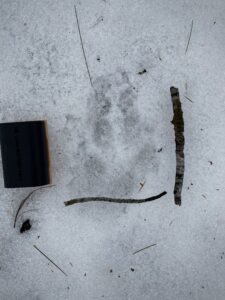
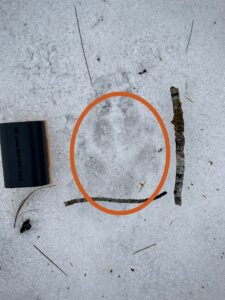
I also used my snowshoes in a similar manner for measuring the length between individual prints (the animal’s stride length), which ranged between 2 and 3 feet, even in the deep snow.
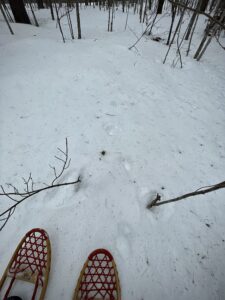
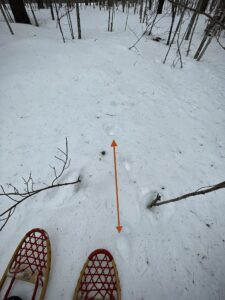
With track sizes and stride length that large, I felt I could reasonably eliminate a coyote as the animal which created the tracks. In addition to that evidence, there were also some places where one of the animal’s leg sank deeply into the snow. At those places, I reached my arm down into the depression and noted where the surface of the snow correlated to my arm. In each case, the snow surface was at about mid-bicep on my arm. The tip of my fingers to mid-bicep measures 21 inches. This is telling, because in those instances of deep prints in the snow, the animal’s brisket did not leave a mark on the surface of the snow – further supporting that the animal was not a coyote.
Distinguishing dogs from wolves, especially just from tracks, can be challenging. Certainly, we allow dogs on KML property and we recently hosted Dawg Daze (a skijoring event) on our ski trails. However, tracks of domestic dogs are almost always on or adjacent to the cross country ski and snowshoe trails and don’t lead away from trails without a corresponding track caused by humans who are accompanying the dog. While I haven’t personally encountered nor heard of any free-ranging domestic dogs in the area, that doesn’t mean that there aren’t any. Another telling characteristic that this set of tracks was not created by a large domestic dog is in the pattern of movement. Most domestic dogs instinctively move in a back and forth (almost erratic) “scanning” fashion, on both small and large scales, whereas wolves tend to walk more directly when traveling.
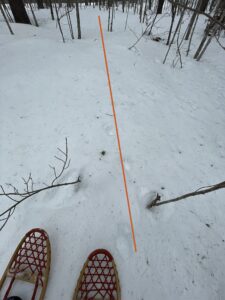
When looking at the GPS trail of the animal’s path across the golf course it is very direct in its heading.
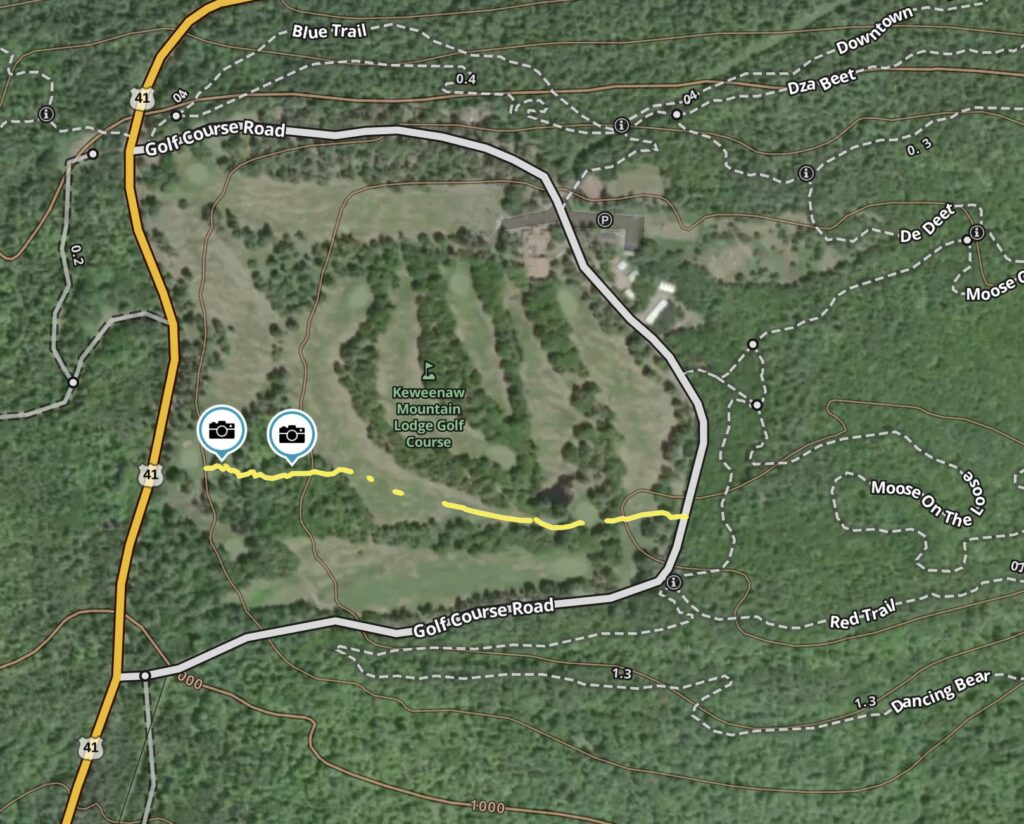
For people, wolves have, for a very long time, been controversial creatures on the landscape. In terms of adaptability, the gray wolf (Canis lupus), as a species, is arguably one of the most adaptable top-predators that we know of in North America. They, historically, occupied all ecosystems on the continent, except maybe extreme arctic and alpine regions. The one thing gray wolves do not adapt to well, though, is encroachment by humans. So, where you find higher densities of people you will likely not encounter a wolf. For me to find the evidence of being in the same space as a wolf (within just a few hours) reminded me that even though the region is becoming more and more encroached on by human development it still remains a wonderfully wild place.
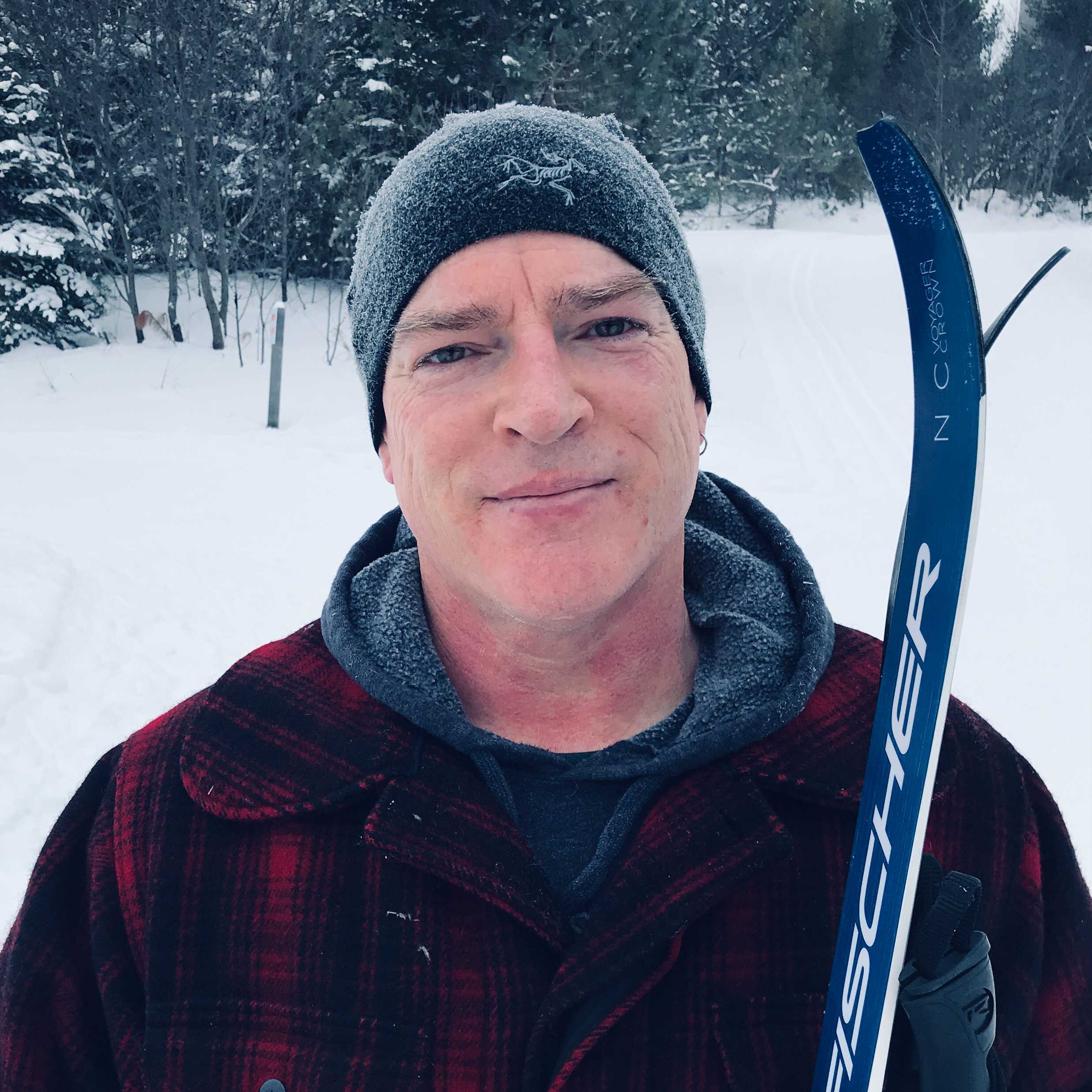
Since I was a child, nature, wildlife, and the outdoors have always been my deepest fascination – the intrinsic force which drives me. Those interests led me through, both, my career (in wildlife ecology/management and science education) and my preferred forms of recreation (hiking, backpacking, canoeing and kayaking, photography, hunting and fishing, and birding). Although, I was born and raised in the UP, these pursuits also provided me the opportunity to live overseas (in Europe and Asia) for 15 years, which greatly expanded my experience with the outdoors and outdoor recreation in different cultures. So, if you’re interested in anything related to the outdoors, stop by the Lodge (or catch me anywhere you may see me on the grounds) to chat about or get set up for your next outdoor adventure.
